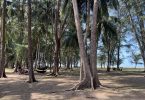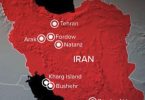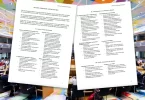The recent Zambian International Tourism Expo in Lusaka may have been beset with problems outside of the organizers’ control, but nonetheless delivered a resounding clarion call to the Southern African nation’s tourism community that a strong, united front is needed if sustainable growth is to take place.
An unfortunate last-minute torrential downpour on its opening day put paid to the plans of holding the expo outside at the Mulungushi Conference Centre in what should have been the warm autumn sun, forcing exhibitors to run for the cover of the center’s somewhat dated and tired interior and seriously delaying the kick-off of the annual event which was co-hosted by the Zambian Tourism Board (ZTB) and conference organizers Africast.
With domestic tourism as its theme, the expo managed to limp to a more consolidated and better organized second day, which was open to the public and which coincided with celebrations for Zambia’s 50th anniversary of independence.
Tourism in Zambia is primarily based on the twin pillars of eco-tourism/safari and business tourism, with destinations such as the Lower Zambezi, South Luangwa and Kafue national parks dominating the former and the commercial centers of Lusaka and the mining-rich Copper Belt generating the bulk of business for the latter. Add to this Livingstone and the Victoria Falls, still marketed (or possibly over-marketed) as the jewel in Zambia’s tourism crown and the country has a formidable offering of destinations for both leisure and business travelers.
However, what Zambia does not have is any form of leadership in its tourism industry, and a startling lack of tourism “nous” amongst those in charge of marketing the destination and growing tourism’s economic contribution. Currently sitting with its seventh tourism minister in six years, the tourism portfolio is largely being used as a political football by a government which is completely ignorant of the potential the industry holds and how best to harness that potential. And whilst the hierarchy of ZTB are personable, pleasant fellows with a wealth of experience between them, they still demonstrate both a lack of understanding of what the international, and local tourist wants and needs in terms of tourism offerings and a broad knowledge of the wealth of tourism offerings their country possesses and how these need to be maximized.
As is the case with the majority of national and provincial tourism organizations, the potential for greatness is there, but becomes lost in translation and bogged down by political gerrymandering and petty bureaucracy. The result is a private sector bereft of any cohesion and an “every man for himself” mentality where those with the best marketing budget and loudest voices tend to get the lion’s share of the market.
Although the number of exhibitors at ZITE is growing, so is the number of top Zambian tourism products and related services who do not exhibit. It seems to be a case of an “I did it once and it did nothing for me” approach, which is sad because ZITE does have some potential for providing a level playing field on which all of Zambia’s tourism players – stars and wannabes alike – can appear together.
Clearly, ZTB needs to take the bull by the horns and get to grips with the divisions within the country’s tourism sector, making a clear and steady effort to acquaint itself through a process of dialogue and outreach with every single tourism entity the country possesses, not merely the big players and the “done to death” destinations like Livingstone. The organization is sorely in need of a roadshow like no other, in which its senior executives personally visit and properly familiarize themselves with the smorgasbord of options its tourists are presented with when making plans to visit Zambia. It should not be left to hosted buyers and members of the media to educate ZTB about what a magnificent tourism destination Zambia is. What is needed is effective engagement by ZTB to discover what it is about Zambia that buyers and the travel media consistently promote and what the major barriers to tourism growth are.
As an outsider looking in, the biggest hurdle facing Zambia at present is its government’s perception that tourism is a cash cow that needs to be milked to death, rather than nurtured and encouraged to reproduce so that it can provide an unending supply of milk sustainably into the future. Moves like the introduction of tourism VAT and additional travel taxes at airports, have done nothing to stimulate a cash-strapped inbound market and have all but hammered the local market. The sheer cost of tourism offerings in Zambia is of itself one of the biggest stumbling blocks to sustainable growth. Indeed, it is getting harder and harder for tourism product owners to break even, let alone make a profit. Tourism entrepreneurs of all descriptions should be encouraged to grow their businesses and helped to do so by the government in whatever means necessary. In South Africa tourism regularly outstrips mining in its contribution to the national economy, and there is nothing to suggest that the same could not happen in Zambia if the government was to encourage growth rather than impede it.
The second major challenge facing tourism growth in Zambia is a government which does not recognize the importance that protecting its environment plays. The recent greenlighting of plans to place a copper mine in the heart of the Lower Zambezi National Park is an illustration of how Zambia’s government has its wires completely crossed when it comes to understanding the role conserving and protecting wilderness areas plays in supporting a primarily eco-based tourism sector.
Access to the country’s tourism destinations is a third, and equally troubling issue affecting the Zambian industry. This enormous country’s infrastructure is in a state of disrepair, bordering in parts on ruin. This means that getting to far-flung tourism destinations like Lake Tanganyika is difficult, if not impossible for both inbound and domestic tourists. This limits the economic impact of tourism to areas which are easier to get to, thereby disenfranchising more distant communities which could be, and should be benefitting from its growth.
Finally, ZTB and the Zambian Government are making the classic mistake that a myriad other tourism agencies have made over the years in that they are not listening to the private sector. What the private sector need are people who understand them, and their industry, leading them and assisting them in growing the industry in Zambia. What they don’t need are people with no experience or understanding of the industry at grassroots level to tell them how to operate or how to market their products.
In short, it’s time for Zambia to realize that in order to compete effectively on the tourism world stage it needs to have a clear and attainable goal and visionary leaders backed and supported by a vibrant, committed and completely unified private sector.






















